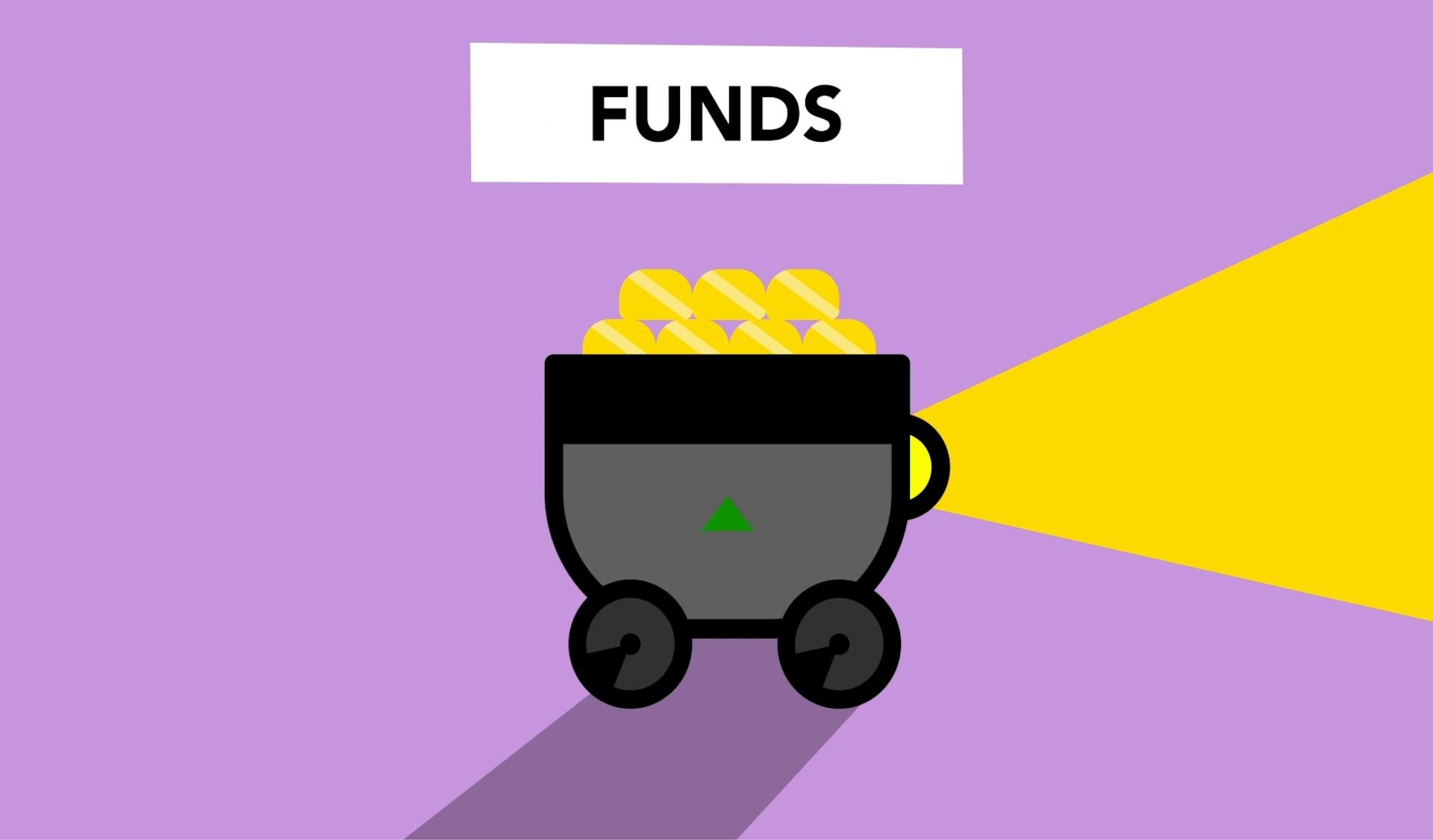
Passive investing through index funds is a straightforward way to invest in the stock market. By investing in a small portion of the entire market, you can benefit from its overall growth.
Index funds aim to replicate the performance of a specific market index, such as the S&P 500. This means that the fund's returns are directly tied to the performance of the underlying index.
Investing in index funds requires minimal effort and research. You can start with a small amount of money and gradually increase your investment over time.
Index funds are often less expensive than actively managed funds, with fees as low as 0.05% per year. This can save you a significant amount of money in the long run.
Recommended read: Cathie Wood Ark Invest Performance
Benefits of
Passive investing through index funds offers several benefits that make it an attractive option for investors.
One of the main advantages is diversification, which can be achieved through one index fund, rather than individually buying and managing all of the stocks in the S&P 500.

Index funds are also great for low-cost investing, especially compared to active funds, which generally charge much more.
Passive investment funds are relatively transparent, as there's no secret formula that they're trying to keep from other fund managers.
Index funds generally have lower turnover than actively managed funds, meaning they do not buy and sell securities frequently, which triggers fewer taxable events.
This is particularly relevant for mutual funds held in taxable accounts.
You can clearly understand what you're investing in without having to do as extensive research as you might when reviewing different active trading strategies and fund managers' track records.
Here are some key benefits of passive investing:
- Cost Efficiency: Passive investment strategies typically have lower management fees and expenses compared to actively managed funds.
- Diversification: Passive investment vehicles such as index funds and exchange-traded funds (ETFs) provide broad exposure to entire markets, sectors, or asset classes.
- Transparency: Passive investment products aim to replicate the performance of an underlying index, making their holdings and strategies transparent to investors.
- Consistent Performance: Passive investment strategies seek to match the performance of a benchmark index over the long term.
- Tax Efficiency: Passive investment strategies tend to have lower turnover rates compared to actively managed funds, resulting in fewer capital gains distributions and potentially lower tax liabilities for investors.
Index Fund Types and Characteristics
Index funds are a type of passive fund that tracks a specific market index, such as Sensex or Nifty, and offer broad exposure to a particular segment of the financial market.
Index funds can be categorized into different subcategories, including asset class, geography, and sector. They are designed to replicate the performance of the index they track, making them a cost-effective option for investors.
Index funds are often compared to ETFs, which are also a type of passive fund that tracks an underlying index. However, ETFs trade on the stock exchange, allowing investors to buy and sell them throughout the day.
Some popular types of index funds include:
- Index funds: Track a specific market index
- Exchange Traded Funds (ETFs): Track an underlying index and trade on the stock exchange
- Smart beta funds: Combine passive investing with selective criteria for higher returns
What Is a Fund?
A fund is a type of investment vehicle that pools money from many investors to invest in a variety of assets, such as stocks, bonds, or other securities.
Funds can be actively or passively managed, but passive funds, also known as tracker or index funds, are a popular choice for many investors. These funds don't have a fund manager deciding which securities to invest in, making them cheaper to invest in.
Passive funds track a specific market index or stock market, aiming to deliver returns in line with the current market. They don't try to beat the market, but rather replicate its movement.
Recommended read: How Do Angel Investors Make Money

There are several types of passive funds, including index funds, exchange-traded funds (ETFs), and fund of funds (FOFs). Index funds track a specific market index, such as the S&P 500 or Sensex, and hold the same securities in an equivalent proportion.
ETFs are a type of passive fund that tracks the performance of an underlying index and trade on the stock exchange, allowing investors to buy and sell them throughout the day.
Here are some common types of passive funds:
- Index funds: track a specific market index, such as the S&P 500 or Sensex
- Exchange-traded funds (ETFs): track the performance of an underlying index and trade on the stock exchange
- Fund of funds (FOFs): invest in other mutual funds to provide a diversified portfolio
- Smart beta funds: combine the benefits of passive funds with the selection of active investments based on certain criteria
It's worth noting that while passive funds aim to replicate the market's movement, they can sometimes be slightly off, resulting in a tracking error.
A different take: Vanguard Index Funds Returns
Types of
Index funds come in many forms, each with its own unique characteristics. Some types of index funds are categorized by the asset class they invest in.
Equity index funds track stock market indexes, such as the S&P 500 or Nasdaq-100. They can be broad, covering large-cap companies, or niche, focusing on socially responsible companies or innovative technology companies.
Intriguing read: Real Estate Asset Management Companies
There are also international index funds that follow indexes outside the US, such as the FTSE Global All Cap ex US Index. This index tracks a wide range of stocks outside the US, offering a way to diversify your portfolio.
Sector-specific index funds are another option, tracking indexes in certain industries like technology, healthcare, or energy. This can be a good way to gain some diversification while betting on a particular sector.
Some examples of passive funds include index funds, exchange-traded funds (ETFs), fund of funds (FOFs), and smart beta funds. Here's a brief overview of each:
- Index funds track a specific market index, such as Sensex or Nifty, and offer broad exposure to a particular segment of the financial market.
- Exchange Traded Funds (ETFs) track the performance of an underlying index and trade on the stock exchange, allowing for buying and selling throughout the day.
- Fund of Funds (FOFs) invest in other mutual funds, providing a diversified portfolio of funds that can be actively or passively managed.
- Smart beta funds combine the benefits of passive funds with the selection of active investments based on certain criteria, allowing for higher returns using a cost-effective model.
Bond
Bond index funds track assets like US Treasuries, corporate bonds, or municipal bonds. There's significant variation in bond index funds depending on factors such as maturity and credit rating.
Maturity of the bonds is a key consideration, with short-term and long-term options available. This means investors can choose bond index funds that align with their risk tolerance and investment goals.
Credit rating is another important factor, with lower-rated bonds typically offering higher risk and reward.
Curious to learn more? Check out: Pimco Flexible Credit Income Fund
Fund Size and Liquidity
Larger funds often offer more liquidity and lower trading costs. However, it's still crucial to compare different funds to understand their liquidation potential.
In many cases, larger funds make it easier to sell shares quickly if needed. This is because they have a bigger pool of investors, which can help to absorb buy and sell orders.
Liquidity is especially important if you think you might need to withdraw your money quickly. It's like trying to sell a car on a busy street versus a quiet country road - you want to be able to sell your shares quickly and easily if you need to.
Funds with more liquidity can also help to reduce trading costs, which can save you money in the long run.
Investing with Index Funds
Index funds are a great way to start investing, and they're relatively straightforward. However, choosing the right one can still require some analysis.
Each fund and fund company may have different fees and portfolio construction, so it's essential to research the differences between each offering within a broad index. A good way to start is to research the assets under management (AUM) of a given index fund, the fee structure, the ease of trading and access to the fund, and the background of the managers in charge of the given fund.
Broaden your view: How to Start a Hedgefund
Understanding your personal situation and life goals is crucial before investing. This includes knowing when you want to retire, how far away from that milestone you are, your risk tolerance, and budget.
Some index funds are inherently riskier than others, but they may also offer more potential reward. For example, if you're close to retirement, you might prefer the relative stability of a bond index fund rather than an equity index fund.
Passive funds have lower fees compared to active funds, with some charging as low as 0.1% annual management charge. However, fees can vary, and even small differences can have a big impact on your returns over time.
Understanding Index Fund Performance
Index funds aim to mirror market performance by constructing well-diversified portfolios of individual stocks, a task that would demand extensive research if undertaken individually.
Passive managers generally subscribe to the notion that outperforming the market consistently is challenging, thus opting to align their portfolios with market or sector performance.
Expand your knowledge: Vanguard Bond Funds Performance
Index funds track specific indexes, grouping securities together based on factors like size or geography. Index funds provide exposure to these securities, which are not directly investable.
An S&P 500 index fund will generally hold the same 500 companies, and if the S&P 500 drops one company out of the index and replaces it with another, the index fund would then sell the company that's being dropped and buy the security of the one that's being included.
While index funds try to match their underlying indexes, sometimes they're slightly off, and this variance in returns is known as a tracking error.
If this caught your attention, see: Firstrade Securities
Getting Started with Index Funds
To start investing in index funds, you'll want to decide whether to do so yourself or access professional help. This determines what type of investment account you'll need to open to purchase index fund shares. Investors can establish an investment account at any of the numerous brokerage platforms such as Fidelity, Charles Schwab, or even app-based platforms such as Robinhood.
You have three options to consider: opening an online brokerage account, using a robo-advisor, or hiring a professional. Each option has its pros and cons, and the key is having a strategy that works for you while minimizing costs. One way to keep costs down is to review the expense ratios in the prospectuses of different index funds and see if there are commission-free trading options.
Here are the three options to consider:
- Opening an online brokerage account: You could open an account with brokerages such as Fidelity or Vanguard to manually invest in funds yourself.
- Using a robo-advisor: You could also use one of the best robo-advisors, which does much of the heavy lifting for you by investing and rebalancing automatically.
- Hiring a professional: Consult a financial manager or advisor to do more research and administrative work for you.
Investment Minimums
Index funds at different companies can have similar goals but have different short- and long-term costs to consider.
A high upfront investment minimum is generally required for mutual funds, unlike ETFs.
This minimum can impact your overall investment strategy, so it's essential to explore your options carefully.
You may be able to pay lower annual fees with a higher investment minimum, but this depends on the specific fund.
It's crucial to weigh the costs and benefits of each option before making a decision.
For another approach, see: No Minimum Index Funds
How to Start
To start investing in index funds, you'll want to decide whether to do it yourself or get professional help. This will determine the type of investment account you need to open.
You can open an online brokerage account with brokerages like Fidelity or Vanguard to manually invest in funds yourself. Using a robo-advisor is also an option, which does much of the heavy lifting for you by investing and rebalancing automatically. You can also hire a professional, like a CFP, who can help guide you through the process.
Consider key questions like what type of fund selection and guidance do they offer? If you're using a brokerage account yourself, how convenient is it to use the platform? Do they have a mobile app, and is the user experience good?
Here are some options to consider:
- Opening an online brokerage account
- Using a robo-advisor
- Hiring a professional, like a CFP
The key is having a strategy that works for you while minimizing costs. One way to keep costs down is to review the expense ratios in the prospectuses of different index funds.
When Did It Get Popular?
Passive investing has a long history, dating back to the 1800s when the Dow Jones Industrial Average was introduced, allowing U.S. investors to passively track baskets of stocks.
The introduction of mutual funds made it even easier for investors to invest passively, giving them a convenient way to diversify their portfolios.
The 1800s marked the beginning of passive investing, with the Dow Jones Industrial Average providing a benchmark for investors to track.
Take a look at this: Vanguard Low-cost Etfs Passive Income
Key Concepts and Considerations
Passive investing is based on the premise that a low-cost, well-diversified portfolio will produce an average market return.
One easy way to take advantage of the passive strategy is to buy index funds and make regular purchases. This allows time to do the rest.
For those who don't want to spend much time managing their assets, passive investing is best. It's perfect for people with long-term plans who can let investments sit.
Here are some key considerations to keep in mind:
- Passive investing is more tax-efficient for wealthy investors, who can build a portfolio of stocks using the same philosophy as index funds.
Expense Ratio
The expense ratio is the annual percentage-based charge that encompasses all fees related to managing the fund.
These costs can take a chunk of your wealth without you realizing it, so it's essential to scrutinize even slight fee differences carefully.
Key Concepts and Considerations
Passive investing is all about simplicity and efficiency. It's based on the premise that a low-cost, well-diversified portfolio will produce an average market return.
To take advantage of passive investing, consider buying index funds and making regular purchases. Let time do the rest.
For wealthy investors, it's more tax-efficient to forgo mutual funds and build a portfolio of stocks using the same philosophy. This approach can help minimize tax liabilities and maximize returns.
Passive investing is ideal for those who don't want to spend much time managing their assets. They can let investments sit and focus on long-term plans.
Here are some key considerations to keep in mind:
- Market volatility: Passive investing can be affected by market downturns.
- Tracking error: Passive funds may not perfectly track the market.
- Concentration risk: Diversification is crucial to minimize risk.
Frequently Asked Questions
What is the difference between active and passive index funds?
Active index funds are managed by a professional, who actively selects and adjusts the fund's holdings, whereas passive index funds simply track a specific market index, such as the S&P 500, without trying to beat it
Is passive investing a good idea?
Passive investing is a good idea for most investors, as markets are highly efficient and quickly reflect all available information. This efficiency makes it difficult for individuals to consistently beat the market through active investing
How do you make money on passively managed index funds?
Index funds make money through returns on their holdings and dividend distributions from the companies in the index. The amount and frequency of these earnings vary depending on the index and fund.
Sources
- https://www.businessinsider.com/personal-finance/investing/how-to-invest-in-index-funds
- https://www.bajajfinserv.in/investments/passive-investing
- https://www.thebalancemoney.com/diversified-passive-investing-strategy-357878
- https://www.raisin.co.uk/investments/passive-funds/
- https://trendspider.com/learning-center/indexing-passive-investing/
Featured Images: pexels.com


